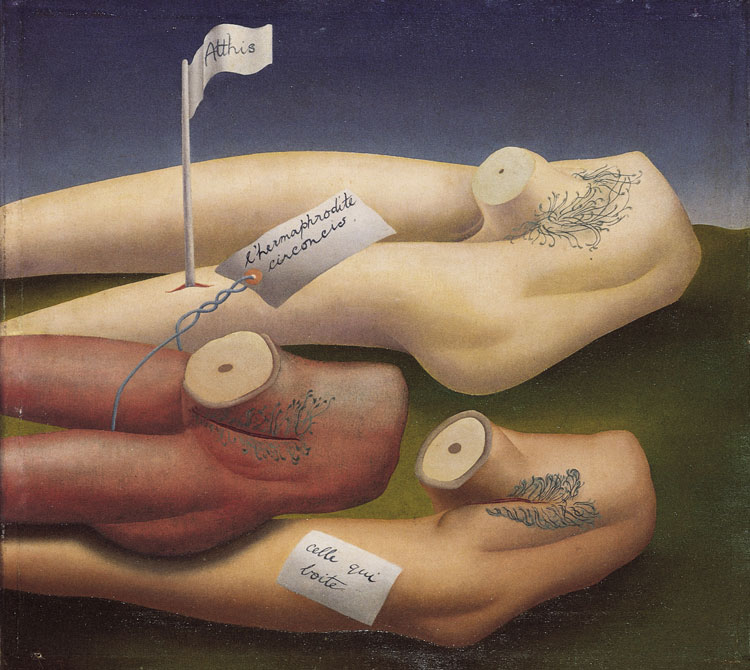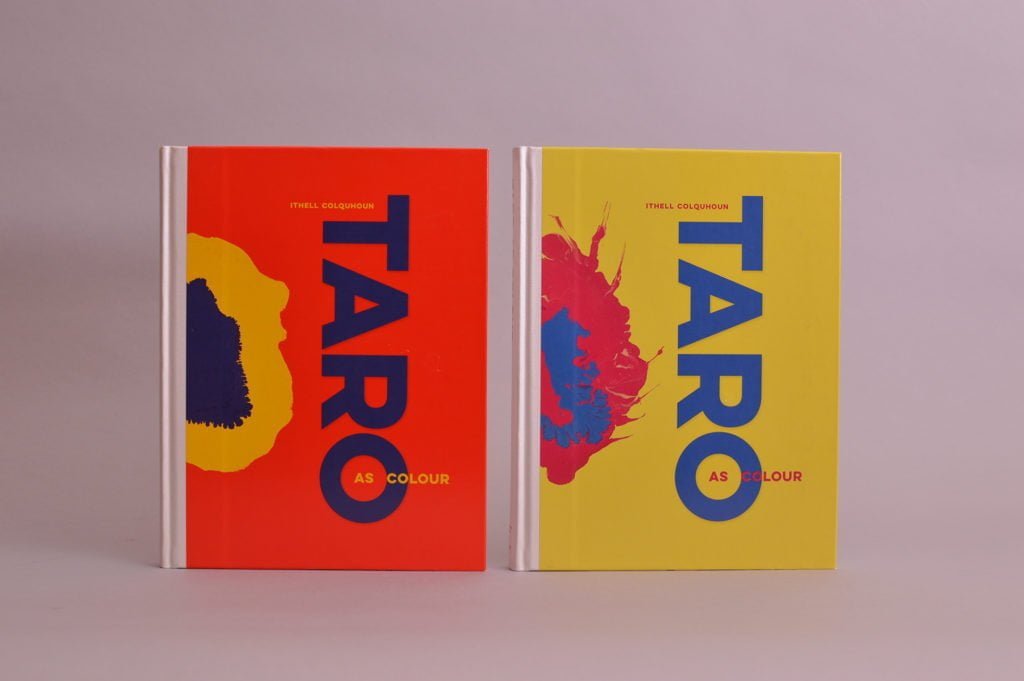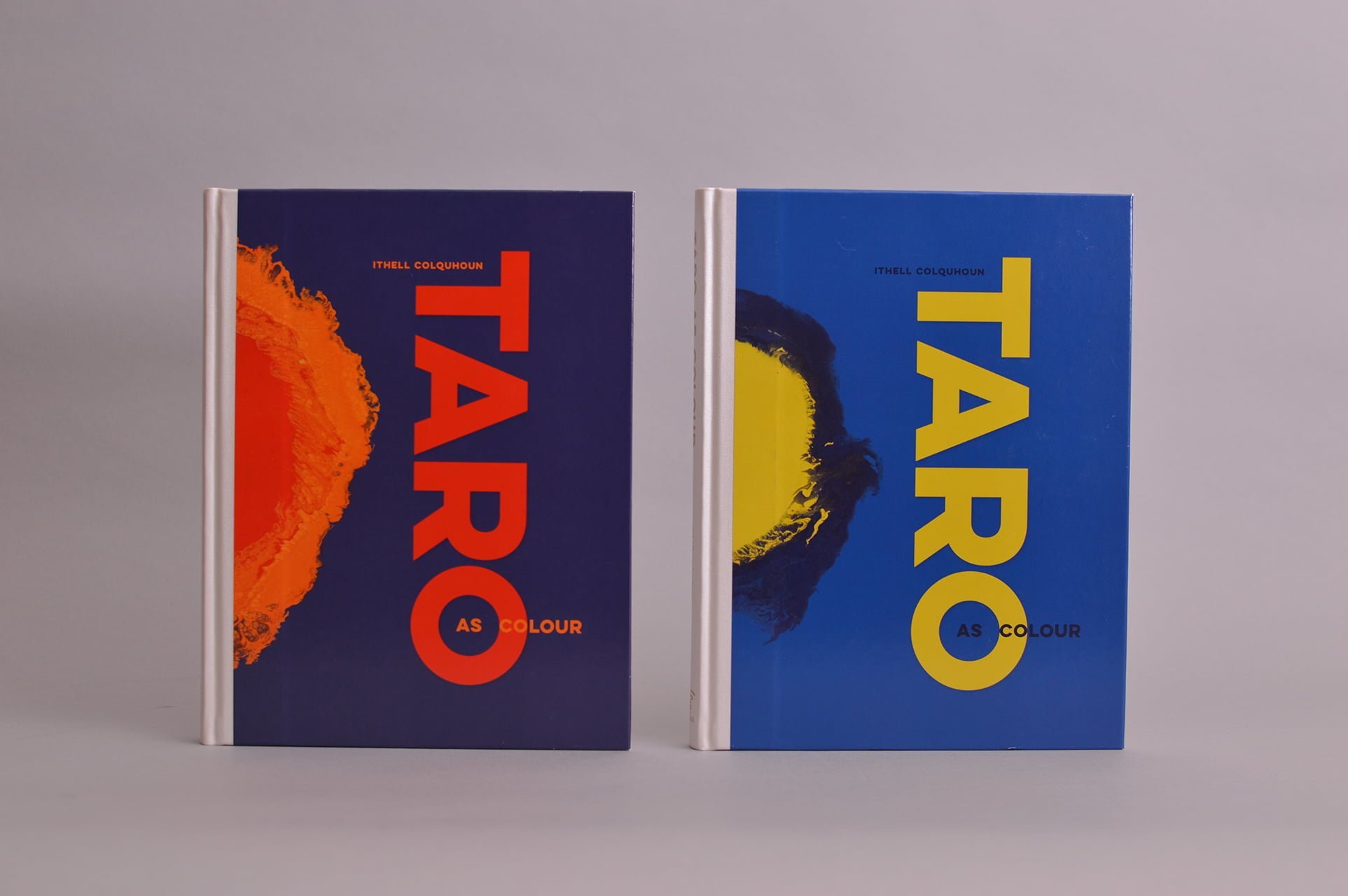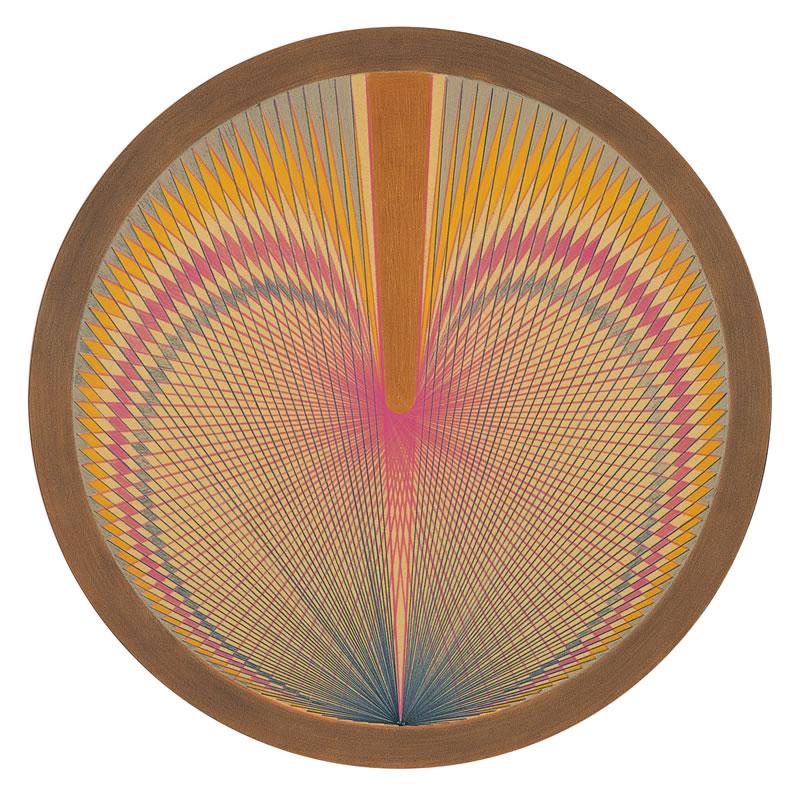
Ithell Colquhoun: Genius of the Fern Loved Gully by Amy Hale
In art history discussions British Surrealism is often an under-represented topic as is one of its most important pioneers – Ithell Colquhoun. But there is more to and more to say about Colquhon than her on-off relationship with Surrealism as Amy Hale makes strongly apparent in her biography of this intriguing artist. Born in India in 1906 and apart from a period residing in Paris, Colquhoun spent the majority of her life living and working in England with most time spent between London and Cornwall. Cornwall in the 20th Century was known as something of a haven for British artists particularly the Newlyn, Lamorna and St Ives schools. Despite treading in art as well as magic circles, Colquhoun largely followed her own path. Hale divides this path into 3 areas; those being Surrealism, Celticism and Occultism and she takes us to these destinations via a non-linear route. Hale states that anyone hoping for a solid art-historical approach from her book will be sorely disappointed – I don’t think they will be. The art-history aspect of the book is built on as solid ground as that of many purely art-history tomes. Hale’s pedigree as a folklorist and anthropologist, as well as her clear enthusiasm and curiosity for Colquhoun as a subject, enrich the discussion of the art and what influenced it.

Colquhoun was a graduate of the Slade School of Art, so had a history of training and was not an Outsider artist as such but she was largely self-taught in her methods and independent in her creative aims. Her relationship with Surrealism was always destined to be hit and miss as it was a notoriously fractious movement with Andre Breton steadfast in his vision of the intentions and character of Surrealism which would at times clash with artists whose own inherent drive would at times veer from his routed roadmap. A point of interest shared between Breton and Colquhoun was Automatic Art – the main feature of this trinity of book reviews. For Breton it was an art that sprung solely from the subconscious of the executor, but for numerous others it was seen as being produced by discarnate spirits, namely the dead, working through a living channel thus combining the corporeal artist and their materials truly as a medium. From within or without, Colquhoun was not content to be simply a conduit as from her painting, collage and writing we can see a very inquisitive mind and this led her to create art in relation to her spiritual and intellectual interests and indeed to create art as part of magical practice.

The roots of tradition can be a considerable factor in certain magical paths and for Colquhoun living in and inspired by Cornwall, Celticism was an obvious avenue to explore. Her deep regard for the visionary poet and chronicler of Celtic folklore William Butler Yeats further bonded her to this path. A problem with traditionalism and indeed some magical / religious avenues is that of nationalism, which in itself could be benign but as is all too sadly evident even now in the second decade of the 21st Century can develop into something discriminatory, malign and ugly. Hale does not dwell long on this point but neither does she ignore it.
As Hale notes, in the 20th Century there were numerous occult societies and orders active and it seemed like for some people membership to them was something to be collected like esoteric stamps or mystical train numbers. Colquhoun herself passed through numerous doors, but it really does seem that this was due to her quest for knowledge and perhaps kinship – that she was exploring all available paths to find the one that best suited her, rather than feeding the ego with membership titles. But a mystery seems to remain, did she find her right path, her true spiritual and magical home or at the point of her death in 1988 was she still seeking? Hale digs deep and unveils a lot about Ithell Colquhoun, her sexuality, her artistic endeavours, her magical questing but yet Colquhoun still seems something of an enigma. Whilst more of her has been brought out of the shadows by Hale’s very impressive detective work, it is perhaps a right balance found – enough of Colqhoun revealed to further engage both art aficionados and occult scholars but not so much as to pick her bones clean and stripped of the intrigue that captivates.

The quality of the artwork featured in the book is very good and left me greedy to see more of her work . Fortunately Fulgur Press have released Colquhoun’s Taro in Colour in book format – this would serve as a fitting companion to this volume as would indeed the biography of Austin Osman Spare written by Phil Baker, also published by Strange Attractor Press.
To purchase Ithell Colquhoun: Genius of the Fern Loved Gully by Amy Hale and to see more information on the title visit -> HERE

Taro as Colour focuses on Colquhoun’s work in 1977 / 1978 whereby she pared down the traditional idea of Tarot divinatory cards, stripping them of the usual figurative imagery and symbolism and instead presented as 78 images of vivid colour and abstract expression. They do still retain relation to the Tarot tradition. Presented with new titles and divided into elemental sets of Earth, Air, Fire and Water as well as ‘Trump’ cards. The works actually have a profound resonance. They may derive from Colqhoun’s long exploration of automatic art but they also pay heed to magical colour tradition as followed by the Hermetic Order of the Golden Dawn. As could be said of much (but not all) Abstract Art there is scope for personal interpretation and I found whilst looking at the cards that I would ‘see’ things. I think it goes beyond pareidolia and is more associated to Rorschach psychological tests whereby the subconscious becomes visible. Furthermore I could see these cards being useful for both meditative and scrying purposes.

It would have been good for the book to come with a set of cards as it is not the cheapest purchase by any means. But you have to take into account that this book is a limited edition – 1200 copies in runs of 300 different cover designs. Each pertaining to one of the elemental suits Earth (indigo) Air (yellow) Fire (Red) and Water (Blue) – make sure if ordering to make preference in the notes on order box at checkout and subject to availability that will be fulfilled. I did not read that part so ended up with a colour I wouldn’t have picked, but don’t mind as I see the colour that fate ended up giving as interesting in itself like the ‘random’ selection of a card. And the book is very nicely presented. Each card gets its own page – off which they sing with vibrancy. The book also is mainly visual. There is no textual interruption save for card title and division of suits within the book but it is opened with a great introduction, again penned by Amy Hale.
Ithell Colqhoun: Taro As Colour is available to purchase from – Here


Not Without My Ghosts : The Artist As Medium – various artists and writers

Ithell Colqhoun is one of the artists featured in this charming little book (with a quote from Amy Hale in reference to her) that marks the touring exhibition of that name curated by The Hayward Gallery and The Drawing Room. Concentrating on art created through or in relation to spiritualist channeling, automatic and trance state composition the show featured work from William Blake; Cameron; Ann Churchill; Ithell Colquhoun; Louise Despont; Casimiro Domingo; Madame Fondrillon; Chiara Fumai; Madge Gill, Susan Hiller; Barbara Honywood; Georgiana Houghton; Anna Mary Howitt; Victor Hugo; Augustin Lesage; Pia Lindman; Ann Lislegaard; André Masson; Grace Pailthorpe; František Jaroslav Pecka; Olivia Plender; Sigmar Polke; Lea Porsager; Austin Osman Spare; Yves Tanguy and Suzanne Treister with The Museum of Blackhole Spacetime Collective: therefore spanning time from the Victorian period to the present day. A lot of the older art however looks ahead of its time. This is particularly true when it comes to works of an abstraction style.

Though Wassily Kandinsky (1866 – 1944) has oft been credited as the pioneer of Abstract Art, it is clear from the earlier works of artists such as Georgina Houghton (to whom we will return in greater detail shortly) that this isn’t the case. Because women featured significantly within the earlier creation of abstract art it must be asked whether their gender is the factor in them remaining largely unknown until now and this is a matter broached within the essays featured in the book, those being Spiritualist Sisters in Art by Simon Grant, Spirit Voices, Women’s Voices: Art and Mediumship by Susan L Arbeth and Infinite Redress: Politics in Spiritualism and Medium Art by Lars Bang Larsen. Within a lot of Victorian opinion, women were perceived as being more generally ‘sensitive’ and therefore often more prone to hearing spirit voices and more ‘passive’ therefore more suited to being used as a channel for the dead to communicate with the living through art – so a question arises as to whether such clairvoyant conduits can be considered the creators of these work or merely the channels for the true dead artists.

Some such as Madge Gill (whom is most often categorised as an Outsider Artist) credited her work to the spirit Myrinerest whom would ‘possess’ her. Notably the name Myinerest comes from ‘My Inner Rest’ which for people like-minded to Breton, whom attributed Automatic Art to the inner subconscious rather than the influence of spirits from outside, can give cause to consider the works of interest and study and not just to sceptically disregard them if they feel uncomfortable with notions of the occult or supernatural. Gill is probably most widely known for her renderings of haunting faces caught within swirling monochromatic maelstroms of patterns or scrawls, but an image of hers displayed within this book shows an abstracted rendition of plants executed in a mix of earthy and rich deep colours. Stylised botanical specimens, swirling patterns and strange faces are well represented within this book.
For further information and to purchase a copy visit -> HERE
World Receivers: Georgiana Houghton. Hilma Af Klint. Emma Kunz

The third of the books reviewed here today, World Receivers, takes a closer look at 3 mediumistic painters and also 3 experimental filmmakers whose work draws association to the spirit-influenced art-forms via the essays and editorship of Karin Althaus, Sebastian Schneider and Matthias Mühling in relation to a 2018/19 exhibition at the Lenbachaus gallery in Munich.

Before Kandinsky, Kupka and Mondrian who all recognised a spiritual aspect within the abstract painting they were long credited with creating in the 20th Century, there was Georgiana Houghton, born in England in 1814. Houghton did receive some artistic training but the details of which are not known. Whatever she learned at art-school will have been at odds with what the spirits guided her hand to do. Following the death of her sister Zilla in 1851, like many people within the Victorian and later Edwardian period Houghton turned to Spiritualism for guidance and comfort through their dark journey through grief. By 1860 Houghton was a practicing medium herself. Initially using a planchette (a wooden wheeled device into which a pencil can be placed and guided by unseen hands enable the medium to render art or writing) Houghton requested that the spirit of her sister Zilla or her deceased brother Cecil guide her hand but neither could apparently do so. However Houghton testified that the spirit of a departed deaf and dumb artist by the name of Henry Lenny was able to work through her. The work created was of a vastly different manner to the precise and naturalistic representative art of the 19th Century. Resplendent in kinetic swirls, sweeps of colourful energy and only sometimes depicting instantly recognisable forms such as faces or flowers, the art of Georgiana Houghton was radically different for the time and even when Kandinsky first experimented with abstraction nigh on half a century later, the disintegration of form into shape and colour would still be too avant-garde and beyond comprehension for many observers. In 1871, Houghton exhibited her work at a personal financial loss to, beyond the more sympathetic fellow spiritualist observers, a rather bemused, sometimes indignant audience. Not until the 21st Century has her work gained greater attention suggesting that whatever her spirits had to say was ahead of her time.


Hilma af Klint (1862 -1944) is another Spiritual Abstraction painter whose light has finally glowed stronger, years after her own passing over. This is however largely of her own doing, requesting that her spiritual works be kept secret until at least 20 years after her death. A graduate of the Royal Swedish Academy of Fine Arts, Klint created accomplished pieces of more traditional art for commercial purposes but her hidden work was something else entirely. As with Houghton, the death of a sibling, Klint’s sister Hermina, proved the catalyst for both her spiritual and artistic development in 1880. Her growing interest in Spiritism, Theosophy and after a meeting with Rudolf Steiner, the esoteric philosopher and clairvoyant, his Anthroposophical Society was to have profound influence upon her artistic oeuvre. Bold colours and geometric shapes were common motifs of her Automatic paintings. It wasn’t until her aptly named ‘Paintings For The Future’ exhibition at the Guggenheim Museum, New York in 2019 that the light of Klint burned with a stellar intensity. Proving to be one of the most successful exhibitions hosted there to date, perhaps in these strange days the strange art of Hilma af Klint has finally found its right audience.
 Emma Kunz – untitled (undated)
Emma Kunz – untitled (undated)Emma Kunz (1892 – 1963) the third of the Spirit artists showcased in this book had an intriguing manner of working. Going into a trance state she would swing a pendulum over large scale graph paper and plot dots along her momentum and then in single sessions which could last through the night she would join those dots. The results were spectacular. Like a human Spirograph, Kunz would create stunning geometric designs. Sometimes she read her pictures as answers to spiritual questions but sometimes they served another unusual purpose. The pendulum of Emma Kunz was not used only to guide the creation of art but as a tool in the treatment of ailments for as well as being an artist and clairvoyant, Emma Kunz was a healer. The book World Receivers features a fascinating short piece by Peter Burri who recounts how Kunz saved his life as a child after he had become badly poisoned by iodine consumption.

The book World Receivers culminates with essays and images on and from the experimental film artwork of John & James Whitney and Harry Smith, but it is the work of the 3 female artists of the spirit that carries most weight and focus and is presented with great care and respect in this lovely large book which can be obtained -> HERE
The trinity of books reviewed here compliment each other very well and all are great additions to both the Occult / Spiritual and Art bookshelves.
Reviewed by Andy Paciorek